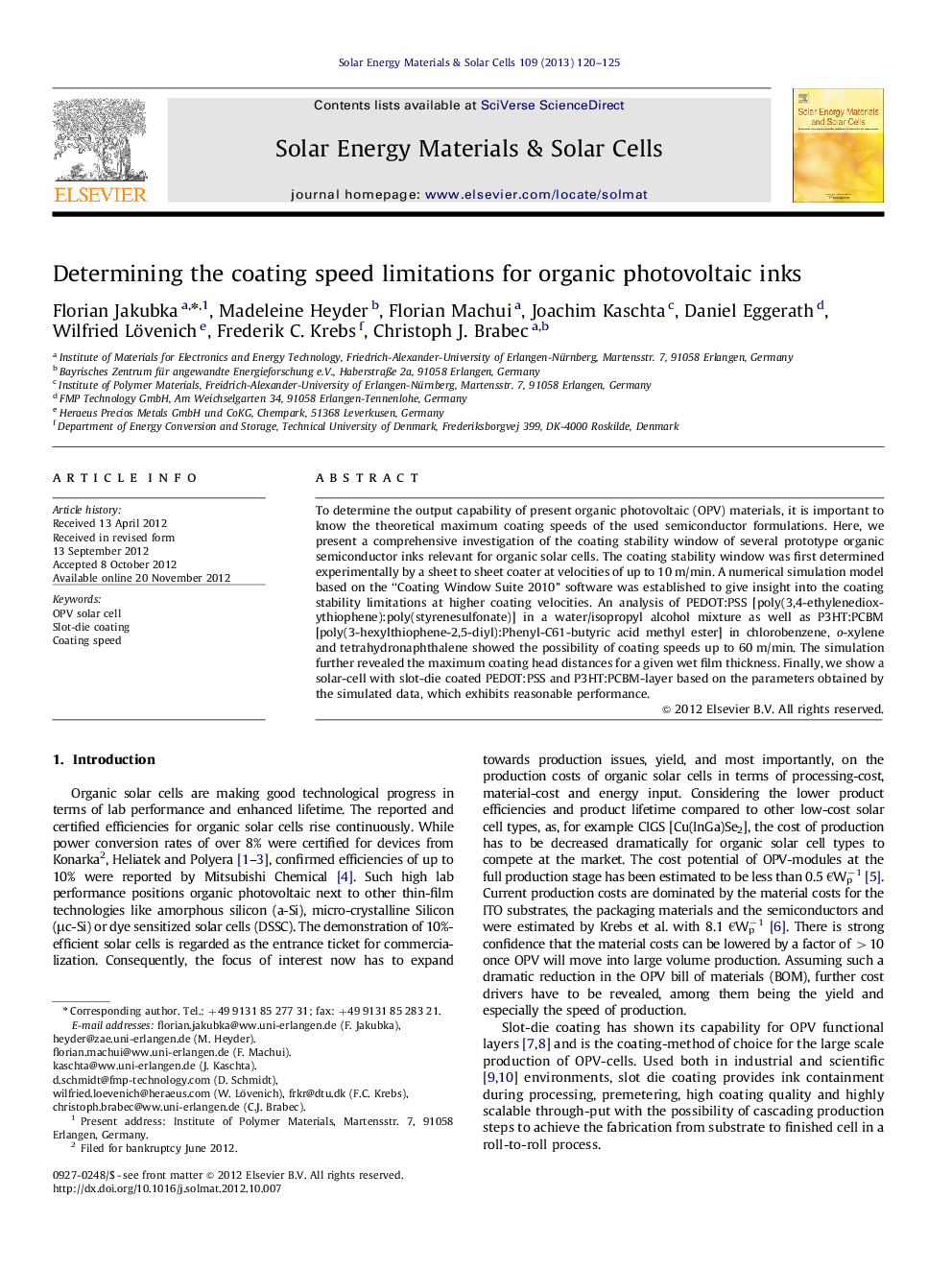| Article ID | Journal | Published Year | Pages | File Type |
|---|---|---|---|---|
| 78423 | Solar Energy Materials and Solar Cells | 2013 | 6 Pages |
To determine the output capability of present organic photovoltaic (OPV) materials, it is important to know the theoretical maximum coating speeds of the used semiconductor formulations. Here, we present a comprehensive investigation of the coating stability window of several prototype organic semiconductor inks relevant for organic solar cells. The coating stability window was first determined experimentally by a sheet to sheet coater at velocities of up to 10 m/min. A numerical simulation model based on the “Coating Window Suite 2010” software was established to give insight into the coating stability limitations at higher coating velocities. An analysis of PEDOT:PSS [poly(3,4-ethylenedioxythiophene):poly(styrenesulfonate)] in a water/isopropyl alcohol mixture as well as P3HT:PCBM [poly(3-hexylthiophene-2,5-diyl):Phenyl-C61-butyric acid methyl ester] in chlorobenzene, o-xylene and tetrahydronaphthalene showed the possibility of coating speeds up to 60 m/min. The simulation further revealed the maximum coating head distances for a given wet film thickness. Finally, we show a solar-cell with slot-die coated PEDOT:PSS and P3HT:PCBM-layer based on the parameters obtained by the simulated data, which exhibits reasonable performance.
Graphical AbstractFigure optionsDownload full-size imageDownload as PowerPoint slideHighlights► We evaluate slot die coated OPV functional layers in terms of maximum coating speed. ► We compare actual coating trials to simulated coating window boundaries. ► Coating window calculations let us estimate coating boundaries at higher speeds. ► PCBM:P3HT and PEDOT:PSS formulations can be coated up to 60 m/min.
